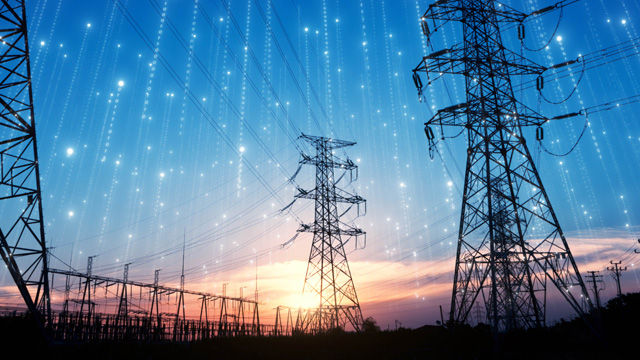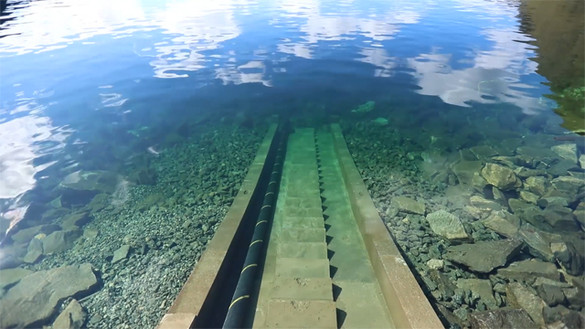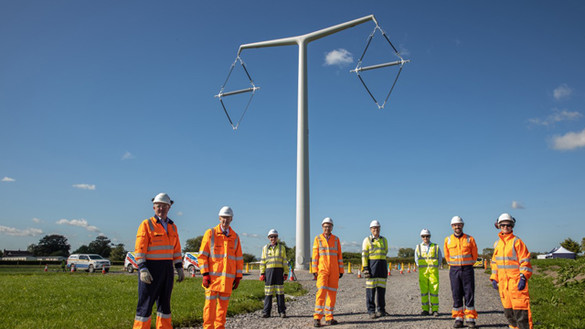
Future Thinking: How AI is paving the way to net zero
A fear of the devastating potential of climate change inspired self-confessed super geek and data scientist Jack Kelly to join National Grid ESO, to help speed up the journey to net zero. Here he talks about how he’s using his expertise in machine learning and artificial intelligence (AI) to unlock a cleaner energy future.
The role of the Electricity System Operator (ESO) is to ensure that there’s enough supply to meet demand. A decade ago the job was relatively straightforward. Back then we relied on fossil fuels, which are reliable; burn them and they release energy you can turn into electricity to power homes and businesses.
The downside of fossil fuels is that, in the process, they release harmful carbon dioxide (CO2) emissions that contribute to climate change. This is why we’re urgently looking at ways to shift to clean renewables, but these energy sources are a lot less predictable.
Solar Photovoltaics (PV) are currently a large source of uncertainty in our energy forecasts. If a dark cloud moves across the sky, the grid can lose hundreds of megawatts of PV generation within minutes. A similar situation occurs when the wind doesn’t blow and we lose the power provided by wind turbines.
This is a big challenge and, while the UK’s grid remains one of the most reliable in the world, it has made the job of the ESO Control Room far more difficult.
Navigating a challenging path to net zero
I liken it to the difference between taking a car out on a routine trip, with very few bends in the road, and negotiating a route down a tricky one-way road, against strong winds and in the fog, while trying to keep the car in the dead centre of the carriageway (we have to keep the grid’s frequency at 50Hz). Add to that your steering wheel has a three-minute delay (which is how long generators take to respond to instructions from the control room) and it’s a tough task without extra assistance.
That’s where AI and machine learning comes in. This enables us to deliver much better forecasts for the control room – a bit like adding radar and sensors to the car in my example above. It enables us to deliver much more accurate data about weather forecasts, so the control room can predict how cloud formations and wind patterns will affect renewable energy generation.
A complex energy mix
Using more sophisticated technology is critical, as our energy system is in a state of rapid transition now. We’re moving away from a centralised system dependent on fossil fuels to a more complex mix of decentralised, varied renewable sources of supply and battery storage. This brings more uncertainties and optimising renewable performance relies on finding much more precise ways to predicting weather patterns.
The variable nature of solar and wind power generation means we’re currently forced to continue to rely on fossil fuels. This is because when we suddenly lose power, because clouds block the sun or the wind drops, we must instantly replace that lost energy from traditional sources. But thermal generators, such as gas turbines, take a while to spin up and start generating electricity. This means that, until we can develop better tools to help us prepare for fluctuations in renewable energy supply, we must keep fossil fuel spinning-reserve online, which is both costly and carbon intensive.
Using AI to predict the weather
The power of artificial intelligence lies in its ability to analyse and decode massive data sets gathered from weather satellites and sensors. It can deliver refined and accurate results much faster than traditional methods, and can even learn from past weather patterns to predict the future. This clears much of the ‘fog’ that makes it hard to ensure the electricity system is prepared for fluctuations in supply from renewables.
That’s why AI plays a vital part in helping us reach net zero, as it helps us manage diverse and complex clean energy generation. It has a crucial role to play in many aspects of the power network, from solar and wind forecasting to battery management and analysing smart meter data.
The more we can use technology to intelligently manage the system the cleaner we can make it. And it’s this potential that excites me. I’ve been trying to mitigate climate change since 2008 and believe my work with a machine learning ESO is my best shot at significantly reducing CO2 emissions to help us reach net zero.


